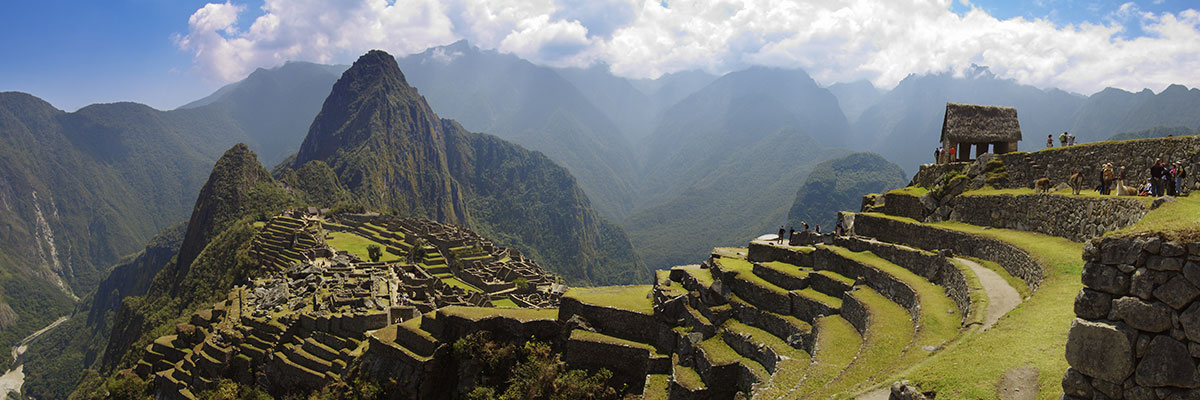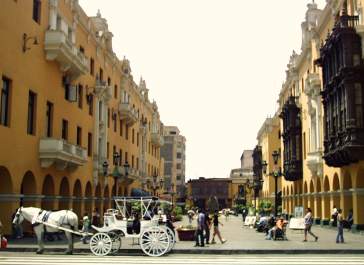
Lima
Lima, the three times crowned city 1535, Few Spanish conquers arrive to a dry but abundant territory known as Lima, name that comes from the deformation of the word Ràmac, which means talker and also is the name of the main river that cross trough that place.
2012, almost 480 years later, Lima is one of the most exciting and popular cities of South America and the world, with his colonial architecture, his amazing street food, Lima is a well recommended city for your enjoyment.
Brief History of Lima
The name: The three times crowned city, and the city of the kings comes in honor to the king at that time, Charles the first of Spain, and V of Germany and his mother, the queen Juana, known as La Loca ( the crazy one).
Before the Spanish, the ones who lived in this land were many natives that come from the Chillon, Lurin and àmac Valley, the three most important valleys of the region. This place was very rich in products and has one of the best weather in the entire territory known as Tahuantinsuyo.
Pre-Spanish period
The Leader who rules this place was Taulichusco, a powerful Curaca who has on his hands the destiny of many people, he control many places, including a very important pilgrimage place, Pachacamac, which becomes one of the most sacred places to the natives that live at that time.
Colonial period
In 1535, on January 18th, Francisco Pizarro arrives to the city in search of the capital of his govern, and found that the àmac Valley was the perfect place to settle down and became his city.
The house of Francisco Pizarro was built over the Taulichusco’s house, the actual Govern Palace (Palacio de Gobierno), where nowadays the President of the Peruvian Republican lives.
The Viceroyalty of Perù was the main capital of all the territories that Spanish have conquered, during 300 years, the Capital Lima enjoyed of a very important fame, had the best constructions, the best fabrics and also one of the best places to live.
Republican Period.
The republican period is also very important, since that in 1821; an Argentinean General called Jos de San Mart’n comes to declare the viceroyalty of Perù free of the cruel and unfair domain of Spain, becoming an Independent and equal Nation, The Nation of Perù.
Actual Period
Nowadays, Lima still conserved many of his colonial and republican constructions, declared in 1988 by the UNESCO as world patrimony of the humankind.
Activities to do in Lima
If you’re looking for some exciting things to do while youìre in the city, we recommend you many things that you can try:
Visiting the Main Square of the city is an experience that you cant forget, with the presidential palace, the main Cathedral, and the churches that surrounds the Historic Center of the City is an obligated trip.
Another thing that you can do is visit the taverns that are located in the center of the city, with over 100 years; they served the best food like anticuchos (beef on a stick), cau cau (Spicy stew with potato and peas) and try the best pisco sour or a cold beer in the company of your love ones.
Visit one of the districts that evocates another times, a simpler and better times, Barranco and his Puente de los suspiros, a beautiful bridge that leads yoy to the Church of Barranco, and leads you also to the seafront, and maybe wet your feet and feel the breeze of the wind and the smell of the salt in the air.
Miraflores is one of the best districts that you can visit, with his cleans avenues and his shop stores, his cafes in the open air, and one of the most exciting things is doing some paragliding in the Miraflores cliff.
Outside of Metropolitan Lima, there are a few places that you must visit: The citadel of Pachacamac, one of the main pilgrimage places and one of the most important cults in the Inca Times. With his clay walls and his breathtaking structures, is a destination that you can’t miss.
The Saint Cristobal Hill is also one of the most picturesque places that you can visit, with his cross on the top of the hill, prevent according to several myths and legends, the invasion of Manco Inca to the Spanish soldiers. There’s a bus that can take you to the top, and also on the get back you can see the smallest church in the world in one of the most traditional neighborhood, Ràmac, ancient place where the natives and the slaves used to live away from the Spanish city of Lima in the early 1500s.
Attractions Tourist
Pachacamac
A long time ago, when the Spanish conquers arrive to this part of the Empire, they saw how great the weather, the products, but most of all was, they saw the richness of one of the most important Sanctuaries in the Tahuantinsuyo: Pachacamac, a place where the creator of most of the living beings use to be worshiped, a dual God who power was destructive and peaceful at the same time. More Information >>>
Caral
When the first civilization came to the Peruvian territory, they never thought that 5000 years later they are one of the first cultures that appeared on the world, with a consciousness so clear about religion and how administrate the products and other things, that still is amazing how could bring such knowledge about formed an entire city. Caral define a important moment in our civilization, mark the path to every culture after them, and is the best example that Perù is a country with an ancient culture and wisdom. More Information >>>
The Historic Center of Lima and his churches
If there’s one thing that amazed the tourist is the way that the constructions in Lima still conserved their original structures. Among these structures are The Historic Center of Lima and his churches, showing how were distributed the people, according to their creed and status, receiving the bless of their respective priestess. More Information >>>
The Gold Museum
The people of the pre-Spanish cultures never knew that their personal objects, ceremonial object and funerary objects were the main cause of the destruction of their tombs and cemeteries, and also the doom of the biggest Empire on this continent: The Tahuantinsuyo Empire. But all is not lost, that’s why the Gold Museum keeps the best of the pieces that once belong to the most important people of the ancient cultures and theTahuantinsuyo Empire, from earrings to golden plates, is a unique experience that you can’t miss. More Information >>>
The Huaca Pucllana
If you want to see how is that the citizens of this side of the territory lived many centuries ago, you got to know the Huaca Pucllana, a place where ancient and modern times are combined to show you how is that the balance between older constructions and modern buildings lived together, and resisting the pass of time, is a great experience that you want to share with your friends and family. More Information >>>
The Huaca Huallamarca
Despite that is not on his original shape, The Huaca Huallamarca is a very good place to spend the time and see how good Archaeologist we have in Perù, and the dedication that one person had to this place, Arturo Jimenez Borja, who rebuilt the whole structure and giving the chance to be observed as a great place to experiment the good intervention of a social scientist and leave a mark for the future generations. More Information >>>
Palomino Islands
Silent witness of pirates, corsairs, wars and other incidents, The Palomino Islands is a group of island that recently are acclimated to receive tourists, and also to see the natural life, the real owners of the sea and the Islands. More Information >>>
Gastronomy
Lima has one of the most traditional dishes in the entire region, the mixed of cultures (Chinese, African, Japanese and native) made a unique taste and flavor that you must try and see. From the street food, with the Anticuchos, stuffed potatoes with chili, and many stews like Chanfainita (made with potatoes and cow beef) and the famous Chinese food called Chifa, a variation of the word Chifan, which means let’s eat!. A typical dish of African influence is the cau cau, which includes rice, potatoes chopped in small pieces, served with the cow stomach, so soft and tender is a recognized dish among many others.
The causa Limena, a mash potatoes mixed with ajà, lemons and olive oil, stuffed with chicken or tuna, or even vegetables, is a traditional dish that you can share with a national drink made of chamomile, Inca Kola, a yellow beverage with so much flavor served very cold.
Sweet deserts
From the early arrive of the Spanish, the sugar was the main ingredient in every part of the conquered territories, and had a big influence by the moors, bringing their own types of deserts made with marzipan, was a huge success among the Spanish.
The called Picarones, similar to a donut but only in the shape, is the desert by excellence, made with squash, flour and sweet potatoes (camote) is truly an exquisite thing to try, dip in some kind of syrup made with honey and brown sugar, is the perfect combination of these two products.
The Mazamorra morada, of also Arabic influence, made with purple corn, chuìo (dried potato in the sun) served with pineapple, peach and raisins, is a tasty desert, sometimes mixed with pudding rice (Arroz con leche) is one of the perfect marriage in the world of the sweets.
The suspiros a la Limena, the most representative deserts of all, is our national desert, made with egg whites, sugar and another Arabic product, the manjar blanco, made with sugar and milk, cook slow until got their brown and distinctive color, is a very tasty desert..


